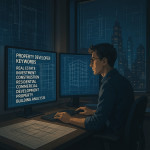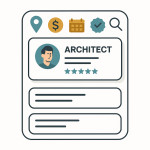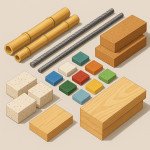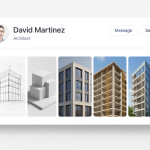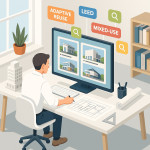Cross-disciplinary duos: team up with lighting experts to enrich spatial impact
Lighting makes or breaks spatial design. When you join forces with lighting experts early, every lumen works harder, budgets stretch further and users rave about the final ambience. This guide shows you how to build a winning partnership that elevates architecture, interiors, retail and exhibition projects alike.
Why a lighting expert belongs in your core design team
From colour temperature to glare control, lighting experts translate creative vision into photometric reality. Their technical know-how unlocks:
- Story-driven atmospheres that align with brand DNA and visitor emotions.
- Energy savings of 20–40 %, thanks to fixture optimisation and smart controls.
- Code compliance without design compromise, cutting approval delays.
- Future-proof scenes ready for AR, projection mapping and multimedia add-ons.
Independent research by the International Association of Lighting Designers shows that projects with a specialist involved from concept stage scored 28 % higher in post-occupancy user satisfaction surveys than those relying on generalist input only.
When to invite a lighting designer
Concept sketch phase
Looping in a lighting specialist when mood boards first appear lets you test dramatic sun-path angles, dynamic colour shifts and accent ratios before the floor plan sets in stone. You also gain early simulations that wow clients and speed approvals.
Detail development
Some teams wait until fixture scheduling, but that choice often triggers costly ceiling redesigns. A seasoned lighting expert will validate cable routes, control zones and luminaire mounting heights long before contractors break ground.
Late rescue missions
If tight timelines force a last-minute call, lighting pros can still salvage spatial impact—yet expect compromises in fixture choice or budget. Plan ahead to avoid this scenario.
Roles and responsibilities in a power duo
| Task | Your studio | Lighting expert | Shared deliverable |
|---|---|---|---|
| Narrative brief | Define brand story & spatial goals | Translate story into lighting moods | Concept lighting storyboard |
| Technical specs | Coordinate structural constraints | Select fixtures, controls, optics | Integrated reflected ceiling plan |
| Budget guardrails | Allocate cost allowances | Value-engineer luminaire mix | Live cost tracker |
| Mock-ups & tests | Build physical or VR space | Tune light levels & colour render | Approved prototype room |
| Commissioning | Oversee final punch list | Aim, focus, program scenes | Post-occupancy comfort report |
Workflow blueprint: six steps to seamless collaboration
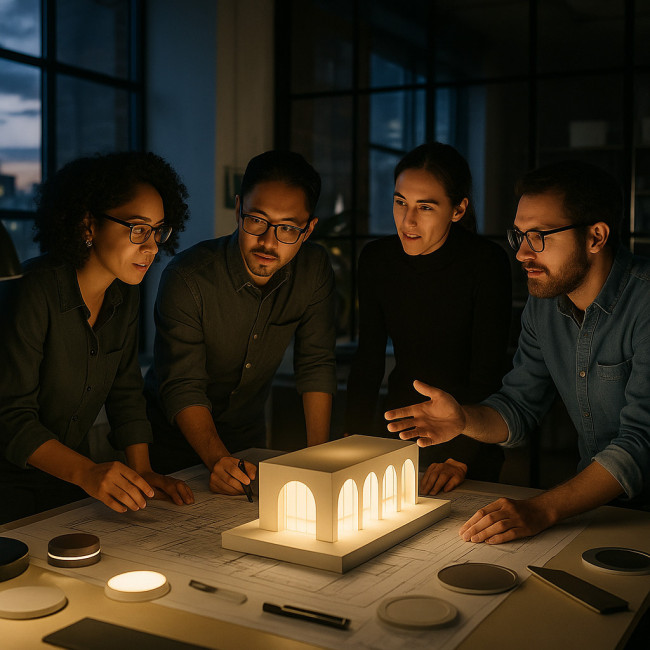
Great collaborations rarely start with paperwork; they start with people sharing the same pool of light. Picture the first project workshop where sketches, lumen targets and material samples overlap on one worktable. Voices bounce between an architect explaining circulation flow and a lighting designer adjusting a miniature spotlight to dramatise a façade. That shared experiment, repeated across disciplines, seeds a workflow that feels more like jazz than project management—it anticipates, listens and riffs in real time until every stakeholder sees the story illuminated.
- Kick-off workshop
Reserve two hours for vision sharing, user personas and aesthetic references. Introduce the project on leading spatial designers showcase pages for additional inspiration. - Light level targets
Set lux ranges per activity zone (e.g., 300 lx in circulation, 600 lx on feature walls). Agree on colour temperature hierarchy. - Iterative simulations
Run daylight and artificial light studies in parallel with BIM updates. Use AI pathfinding tools—similar to those in AI-driven space planning—to test visitor movement against glare hotspots. - Supplier alignment
Invite key fixture brands early, mirroring the coordination grids discussed in multi-sensory exhibition builds. Bulk orders often unlock 15 % savings. - On-site aiming session
Allocate one evening per 500 m² for fine-tuning. Record dimmer scenes for facility managers. - Post-occupancy audit
Survey users at three-month mark. Gather data on comfort, productivity and energy to refine your next duet.
Budget & ROI: early vs late engagement
Lighting consultancy typically represents 3–7 % of total construction value. Engaging the expert after design freeze can double rework costs. Conversely, early collaboration can reduce fixture counts by up to 18 % through smarter placement.
Real-world applications
Retail storefronts
Pairing with a lighting expert allowed a phygital fashion brand to integrate AR holograms and motion-triggered accent lights, echoing tactics from phygital shopfront case studies. Result: a 22 % increase in footfall within the first month.
Stage scenography
On a touring theatre set, the design duo aligned luminaire rigging with safety codes outlined in stage scenography safety rules. Backstage changeovers shrank by 40 minutes per show.
Museum exhibitions
Adaptive beam shaping helped protect light-sensitive artefacts while delivering dramatic reveals. Visitor dwell time near key pieces rose by 17 %.
Common pitfalls—and how to avoid them
- Last-minute fixture swaps: Lock product selections before electrical rough-in to dodge order delays.
- Over-lighting: Aim for layered contrast, not blanket brightness; leverage reflective surfaces.
- Control chaos: Label scenes clearly for facility staff and provide a one-page quick-start guide.
- Siloed BIM models: Share updates daily; clash detection saves endless ceiling redraws.
Mini-quiz: test your lighting-design duet IQ
FAQ
- Do I need a lighting expert on small projects?
- Yes. Even a 50 m² boutique benefits from targeted accent ratios and dimming curves that generalists often overlook.
- How do lighting fees compare to fixture costs?
- Consultancy usually equals 10–15 % of the luminaire budget—an investment that often pays for itself through energy and maintenance savings.
- Can one expert cover both lighting and acoustics?
- Some professionals have hybrid skills, but complex jobs still require dedicated specialists collaborating under clear scopes.
Next steps: turn insights into action
Audit your current workflow and pinpoint where a lighting expert could add measurable value. Reach out to pre-vetted professionals, prepare a concise narrative brief and set joint milestones. Your users—and your bottom line—will thank you.
Ready to elevate your next project? Draft a concept storyboard and invite a lighting expert to your very first design charrette. You will feel the difference at switch-on.
